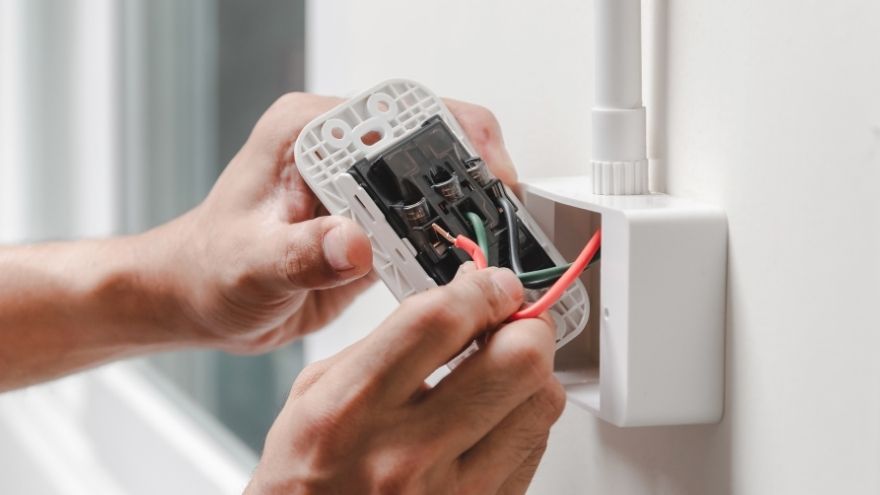Properly selected cables affect the correct operation of the installation, but you also need to know that the selection of the cable cross-section plays an important role. Pay attention to the voltage and load, because a poorly selected one prevents the transmission of current and causes numerous restrictions.

Check out the power cables at the Onninen wholesaler
Why is calculating maximum cable load so important?
![]() Installation cables have their maximum loads. It is worth remembering to pay attention to the permissible voltage drop. It is worth considering why it is so important to calculate the maximum cable load. The load of the cable is a key parameter that determines how much current a given electrical cable can safely conduct. If this value is exceeded, it will lead to overheating and, consequently, damage to the entire installation, or even fire.
Installation cables have their maximum loads. It is worth remembering to pay attention to the permissible voltage drop. It is worth considering why it is so important to calculate the maximum cable load. The load of the cable is a key parameter that determines how much current a given electrical cable can safely conduct. If this value is exceeded, it will lead to overheating and, consequently, damage to the entire installation, or even fire.
Therefore, when choosing cables and wires , special attention should be paid to the wire loads, i.e. the maximum current that can flow through a given wire without causing a temperature increase. This plays an important role, for example in home electrical installations. Namely, the supply voltage must be selected for devices, such as a refrigerator or oven. Too high a load capacity of wires causes damage to electrical installations. Remember also to pay attention to the cross-section of the cable. The larger the cross-section of the wire, the greater the current that can flow through it without causing damage to cables and devices.
Is it better to choose a thinner or thicker cable?
 Power cables should be of good quality. Those made of polyethylene and cross-linked polyethylene will work very well. However, when selecting cables, you need to pay attention to the cross-section of the wire. Here the question arises whether it is better to choose a larger or smaller cross-section of the wire? Generally, the permissible values of current-carrying capacity are specified in standards and regulations concerning the operation of the installation.
Power cables should be of good quality. Those made of polyethylene and cross-linked polyethylene will work very well. However, when selecting cables, you need to pay attention to the cross-section of the wire. Here the question arises whether it is better to choose a larger or smaller cross-section of the wire? Generally, the permissible values of current-carrying capacity are specified in standards and regulations concerning the operation of the installation.
However, the thickness of the wire, which is expressed in mm 2 , affects the resistance. This means that a thicker wire allows the signal to be transmitted over longer distances. The signal strength can be higher and this throughout the installation. When calculating the circuits, you need to divide the number pi by 4. Then square the diameter d of the wire expressed in mm.
Correct calculation of the maximum load of an electric cable
The calculation of the cross-section of the wire is undoubtedly important for the correct operation of the installation. Depending on the result, the transfer of energy in the wire can be selected. It is also worth learning what we mean by a neutral wire. Namely, it is an important element in the electrical system, which is used to provide a return path for the current, both in single-phase and three-phase circuits.
 Now it's time to calculate the maximum load of an electric cable. In this case, the core diameter of all the wires must be taken into account, but also the cross-section of the cores. Therefore, the larger the cross-section and diameter, the more current efficiency is obtained. With the increase in cross-section, the electrical resistance of the conductor decreases and the resulting rapid voltage drop.
Now it's time to calculate the maximum load of an electric cable. In this case, the core diameter of all the wires must be taken into account, but also the cross-section of the cores. Therefore, the larger the cross-section and diameter, the more current efficiency is obtained. With the increase in cross-section, the electrical resistance of the conductor decreases and the resulting rapid voltage drop.
For example, in the case of a 10 mm2 cable, the correct formula is: Ua= 0.017x60= 1.02 V. Similarly, if the voltage drop in the cable is greater and the cable has a cross-section of 25 mm2, the formula is: Ua= 0.0069x60= 0.41 V. To correctly calculate the cable cross-section, you must first determine the maximum length of the wire, and then the current load. An important parameter is also the conductivity of the material and the permissible voltage drop.